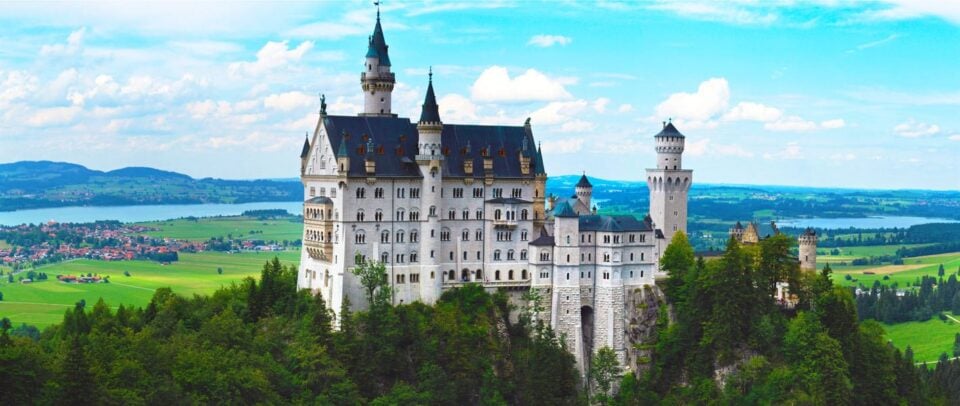The natural diversity and man-made attractions of Bavaria attract a large number of tourists. The Bavarian Alps, picturesque lakes, rivers, medieval towns, and royal castles can be seen using various excursion options. When traveling independently in southern Germany, it is suggested to stay in Munich. After exploring the museums, unique churches, breweries, and other sights of the city, be sure to check out the surroundings. It is useful to find out in advance where to go from Munich for 1 day. The optimal trip itinerary should be planned in advance by carefully studying the map of Germany.
Bamberg
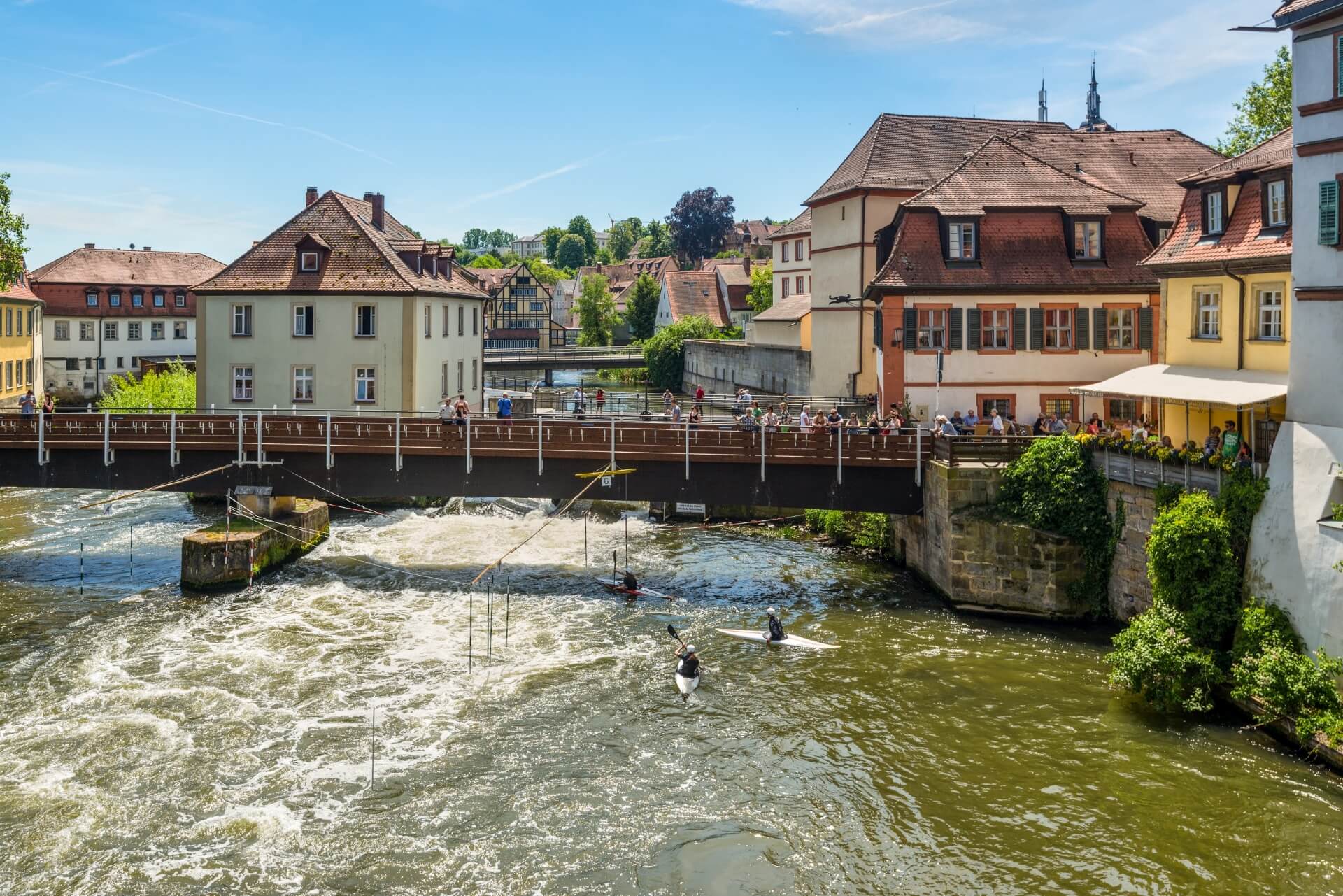
The city, which grew on 7 hills in 902, is often called the German Rome. Its territory is included in the UNESCO lists of “Cultural Heritage of Humanity.” Now more than 2400 buildings in the city are considered historical monuments. Among them are monasteries, medieval temples, houses of wealthy residents from the Baroque era, monumental buildings from various centuries, and the Fishermen’s Quarter (Little Venice). There is a private boat dock next to the elegant houses along the riverbank.
You can see the picturesque landmark during a boat trip. The Cathedral Square of the city impresses with buildings of various architectural styles: early Gothic, Romanesque motifs, structures with Renaissance and Baroque elements. The city is divided into three zones: the City on the Hills, the City on the Islands (grown on two river branches), and the City of Gardeners (suburb). The surroundings of Bamberg are famous for the number of breweries (world leader in their density).
Beer has been brewed since the city’s founding. You can learn about the history of beer at the Museum (the city has 18 different museums). About 50 types of beer are produced now, including the famous Bamberg smoked beer. Getting to Bamberg from Munich is easy (you can also go from other German cities). The 202 km distance is easily covered by car or bus (Flixbus is the most economical option). The trip takes 3 hours.
Oberammergau
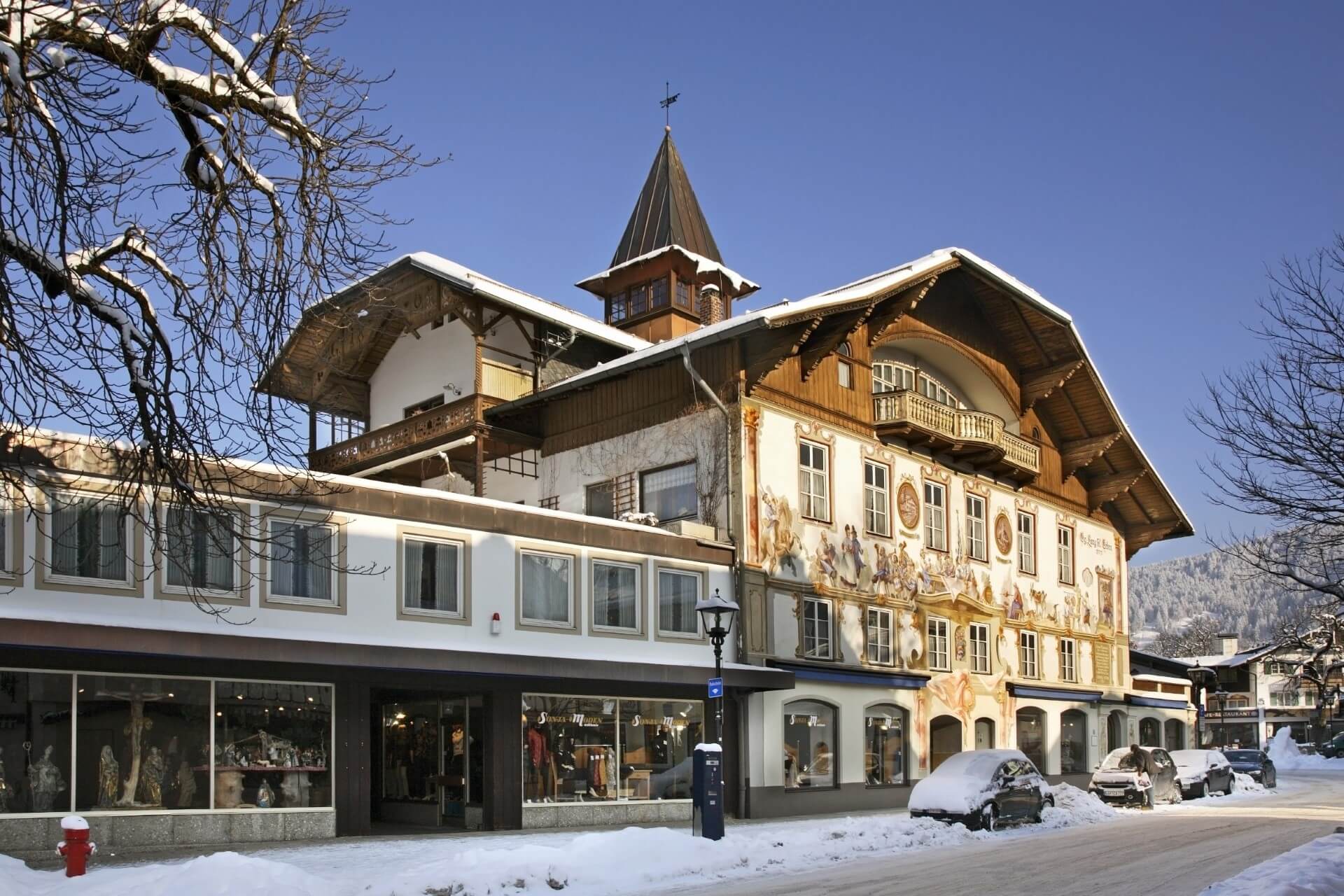
A picturesque village surrounded by the Alps on all sides. They seem to protect the beautiful half-timbered houses (wooden beams with patterns placed across clay walls). Here, in 1748, the famous artist Franz Zwink was born and lived in the Zum Lüftl house, creating a unique fresco tradition. This painting style is called Lüftlmalerei. The village houses are decorated with scenes from the Bible, everyday life, and German fairy tales on the principle of “My nest is the best.”
Three main points attract tourists to the village: the painting of house exteriors, theatrical productions of “The Passion of Christ,” and ancient crafts. The productions originated after being saved from the plague epidemic in the 17th century. The first performance depicting Christ’s suffering and mourning for the dead people took place then. The performances are repeated every 10 years (years ending in 0). The village has ancient workshops for wood carving, glass painting, and pottery. The woodcarvers were often called “carvers of the Lord God.”
Their products adorned parishes, monasteries, temples, and churches. There are many jewelry workshops in the village. You can learn about the history of the mountain village at the local museum. The convenient way to get to the village is by train from Munich station. At Murnau station, you need to transfer to a red train to the village. The trip takes 2 hours. By car, follow the A 95 highway with signs and a navigator for about 1 hour 30 minutes.
Nuremberg

The first thought about the city is to see the place where the famous Nuremberg trials took place. Nuremberg was a refuge for Nazi pre-war parties for a long time. The city, almost completely destroyed during World War II, was restored and became the second-largest settlement in Bavaria. The city’s history begins around 1000 with the construction of a castle and the Nuremberg fortress on the strategically important rocky bank of the Pegnitz River.
During the Middle Ages, the city was considered the most German.» Here, the attributes of the German emperors’ power (kleinods) were stored. The largest architectural structure in Germany, St. Lorenz Church with the famous “rose” (stained-glass window) with a diameter of 9 m, stands in the city. The most popular Christmas market takes place at the famous market square. It appeared on the site of a burned Jewish ghetto.
In memory of the deceased, the square is adorned with the Frauenkirche church. The amazing clock installed on it still works today. At the edge of the square, an unusual well-fountain is decorated with a Gothic column covered in gold and adorned with 40 figures of kings, knights, and the legendary ring. You need to touch it to make a wish come true. The distance from Munich is 170 km, easily covered by car (bus) in 1 hour 50 minutes along the A 9 road.
Zugspitze
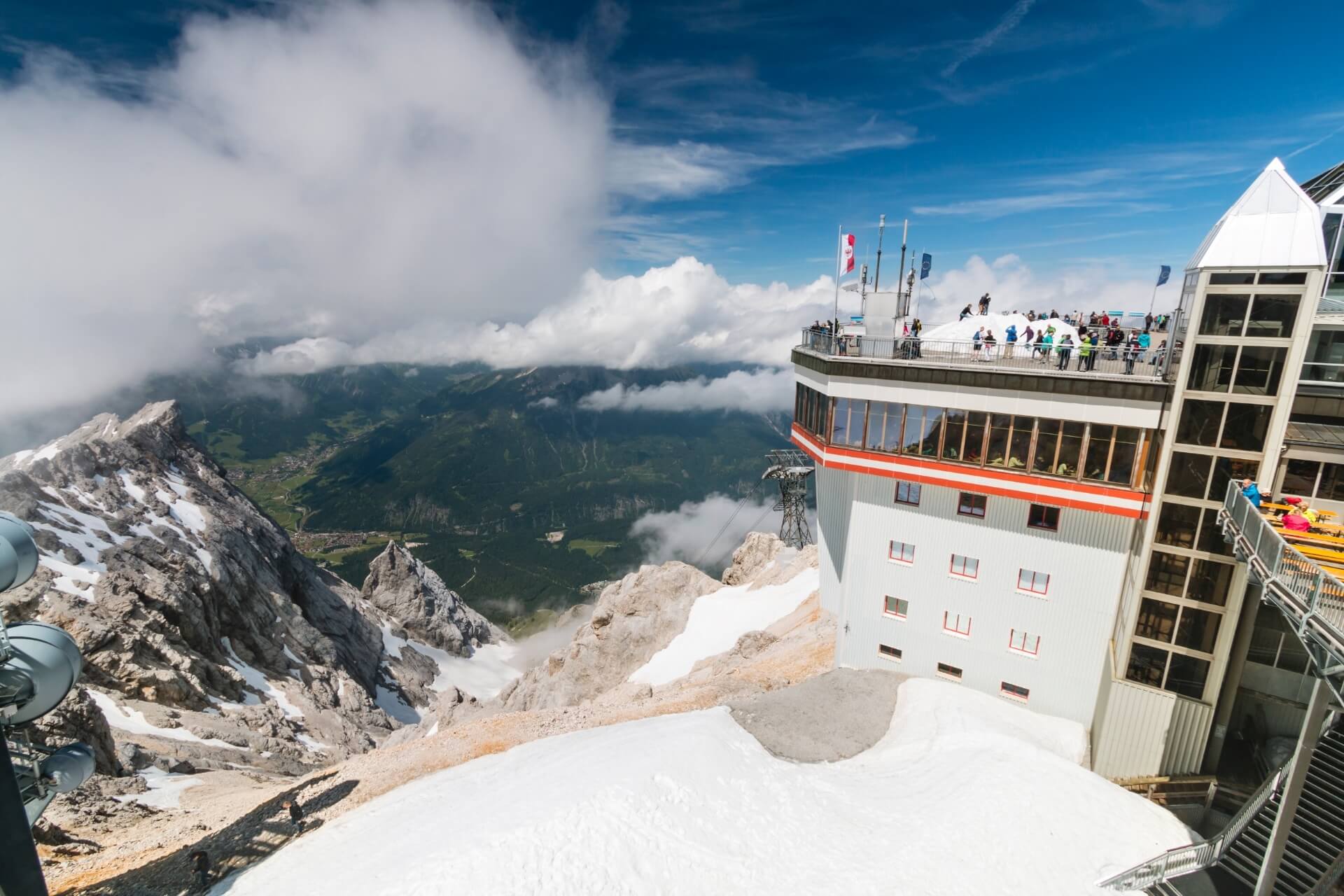
It is no longer necessary to be a courageous climber to conquer the highest mountain in Germany and admire the picturesque surroundings of four countries at once: Italy, Austria, Switzerland, and Germany. The first conquerors of the German Alps peak were a group of climbers led by Josef Naus in 1820. Since then, developed routes for hiking, cable cars, railroads, and funiculars lead to the peak.
The ascent time is chosen after analyzing meteorological data (a weather station has been at the top of the mountain since 1900). There are often avalanches and snowfalls here. Ski enthusiasts and extreme fans can enjoy snowy slopes 300 days a year. At a height of 2962 m, a gilded cross installed by the local priest’s idea in 1851 shines (it was renewed with helicopter delivery in 1993). The attractions of Zugspitze include a meteorological station, Lake Eibsee, the Tyrolean cable car from Austria, and the Bavarian funicular.
The railway to the mountain runs from the town of Garmisch-Partenkirchen. Its length is 11 km. The nearest Austrian settlement (Ehrwald) is 6 km away. You can get to the mountain from Munich: by car on the A 95 highway (90 km), by train (regional trains from the central station every half hour), or by bus.
Berchtesgaden
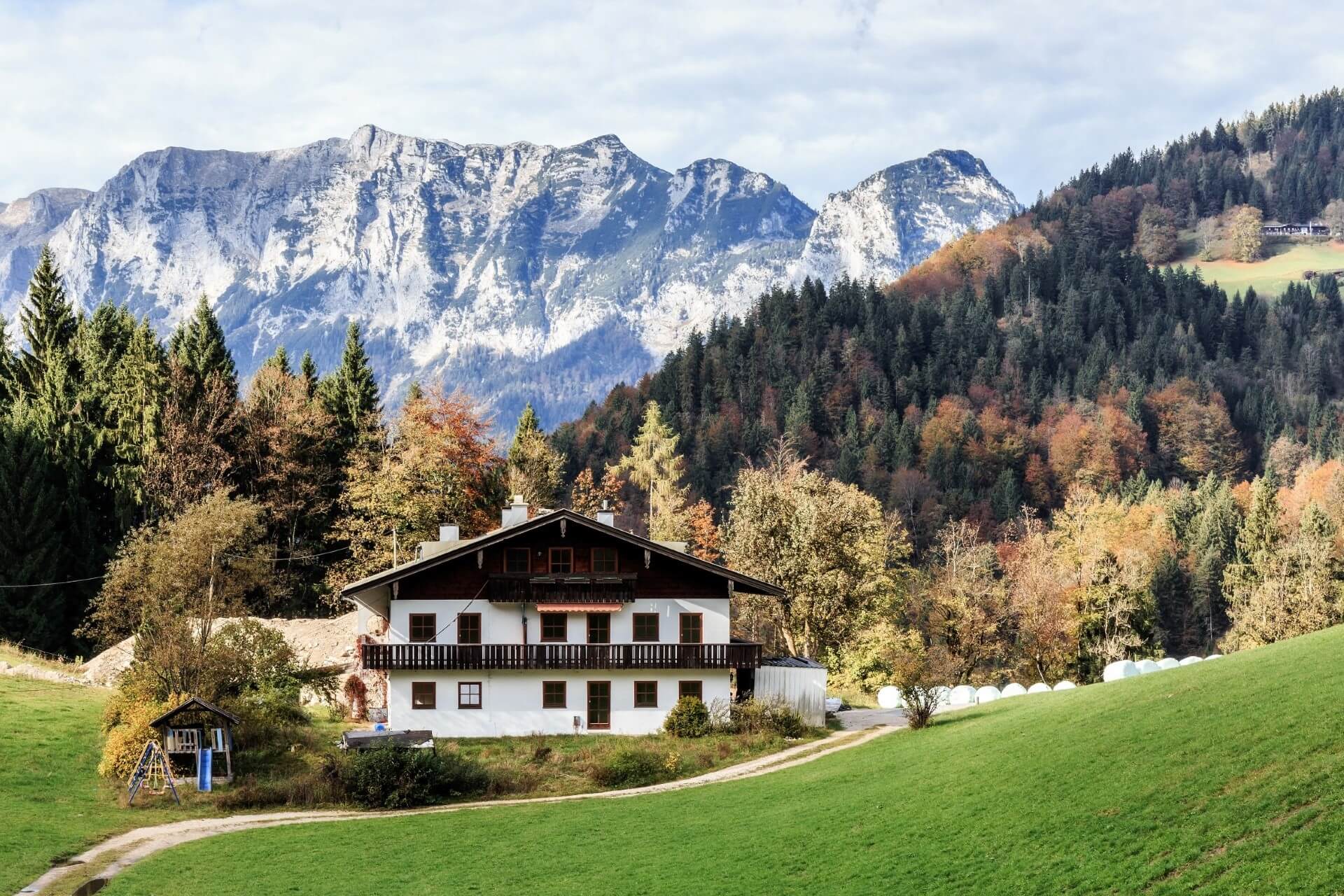
The Bavarian Alps surround the small town of Germany with beautiful streets and unforgettable surroundings with natural and man-made attractions. Nature has created a unique set of riches here, suitable for health improvement and active recreation. Famous salt mines, thermal springs, trails between mountain peaks for winter sports, and the cleanest mountain lakes Hintersee, Königssee, and Obersee.
Year-round resort vacations are organized in the town. Surrounding areas include amazing places connected with Germany’s history. This is the famous “Eagle’s Nest,” where Hitler planned to live, possessing an artistic sense and dreaming of becoming an artist. Now there is a cozy restaurant in the building. You can not only try delicious dishes but also see the beautiful surroundings of the eastern slopes of the Alps. Procedures at the Bad Reichenhall balneological resort help restore health.
You can get from Munich by train, transferring in Freilassing, or to Salzburg, then by bus to Berchtesgaden. For a quick trip without transfers, it is necessary to use a car on the A8 route. To do this, you can rent a car or order a transfer.
Rothenburg ob der Tauber
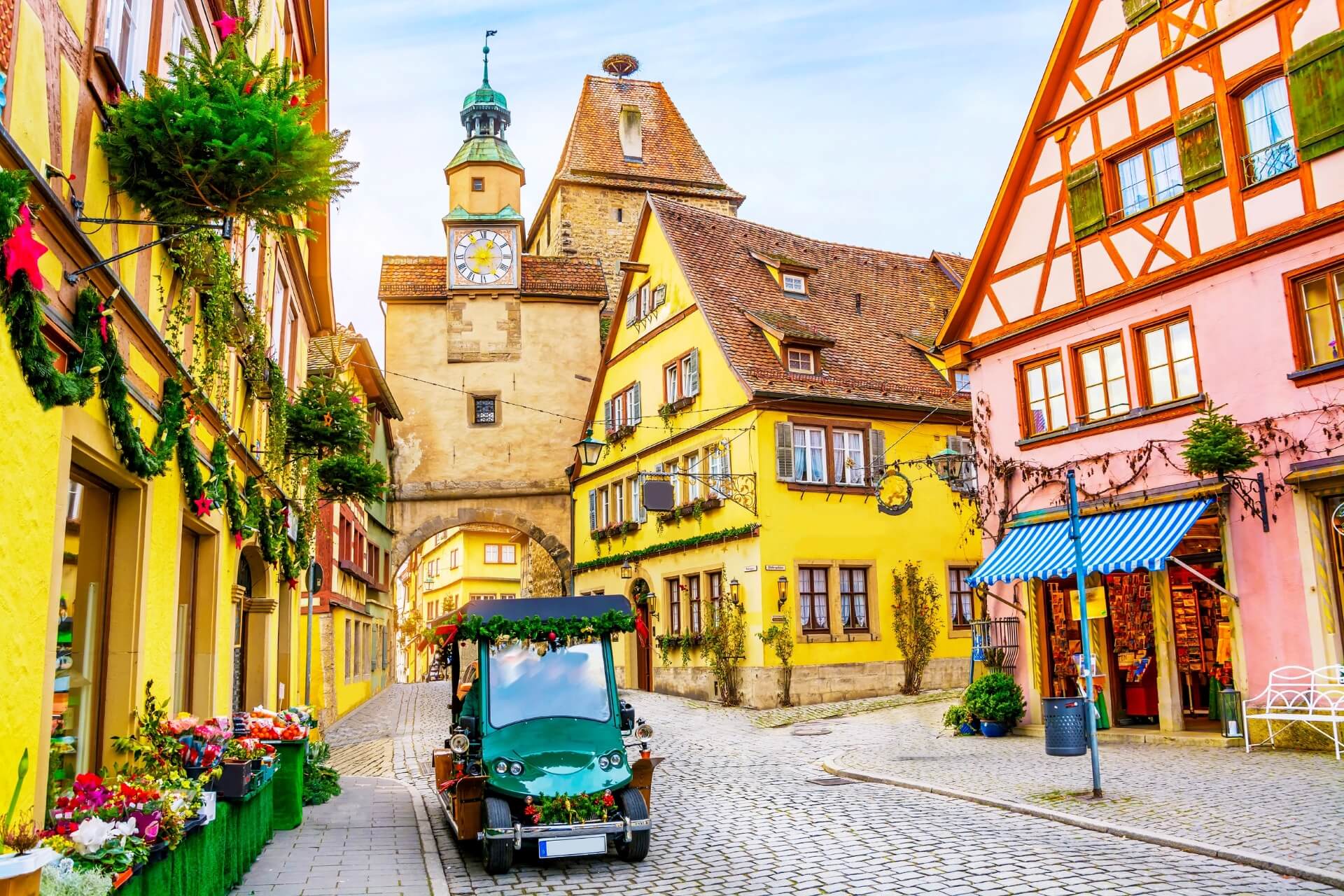
One of Bavaria’s most romantic cities rises above the picturesque Tauber River valley. It effectively reminds of the mysterious past of the Middle Ages. Cobbled streets, ancient walls, charming houses, and the preserved city center confirm many people’s perception of ancient Germany. The beautiful red stone used in the construction of buildings (Count von Kromburg’s castle in 970 AD) determined the name of the future Rothenburg (its first name was Detwang).
The “classic” appearance of the old city often served as a filming location for movies with medieval scenes. The city’s tradition is to hold annual costume festivals dedicated to: the events of the Thirty Years’ War (Master’s Drink), and Christmas. You can learn about the holiday’s history at the Christmas Museum. Among its exhibits are many different Santa Clauses and Christmas decorations. The main attractions include the Town Hall with an observation deck, the churches of Saints Nicholas and James, Toppler’s house, and St. George’s fountain. You can get from Munich (235 km) via the A 8 – A7 or A9 – A6 – A7 roads in 3.5 – 4 hours.
Salzburg
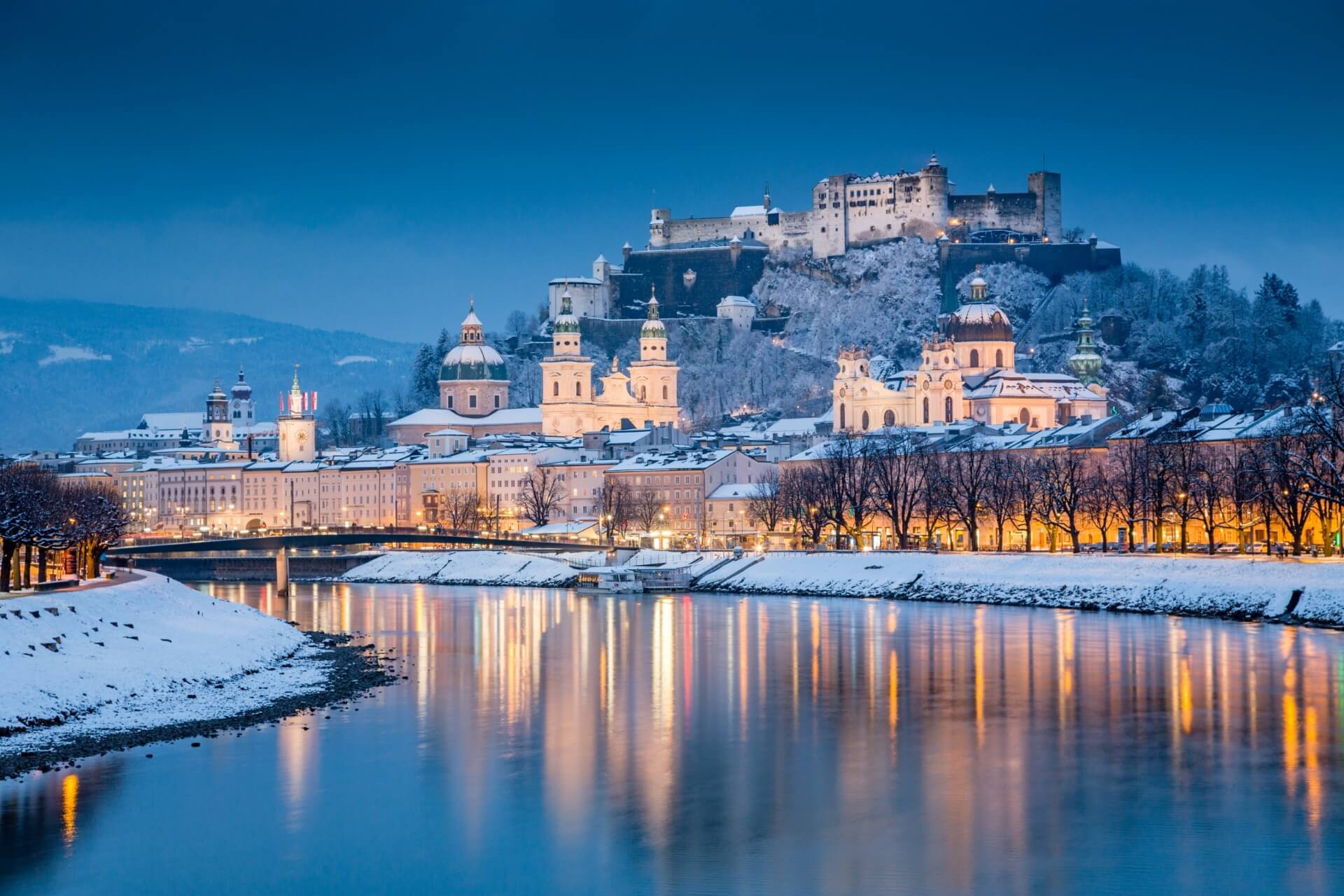
At a distance of 145 km from Munich, 5 km from the border, there is a city that grew from a settlement formed during the Neolithic era. You can easily get here by car after studying the country’s map. Its territory is located on the banks of the Salzach River at the foot of the northern Alps. It is recommended to start a trip around the Old Town from Residenzplatz. It was formed at the beginning of the 17th century. Here are the Old and New Residenzen of the archbishop, the Residenzbrunnen Fountain, and the Benedictine Abbey of St. Peter.
All of Salzburg is well visible from the top of the Festungsberg Mountain, where the well-preserved medieval Hohensalzburg Fortress stands. You can reach the top on foot or by funicular. The mountain surroundings of the city are known for salt, silver, gold, copper, and zinc deposits. They shaped the city’s economy in the past centuries. Now it is known as the world’s main music center. The first Mozart Festival was held here in 1842.
The Mozart Museum, the white Mirabell Palace, the Dwarf Garden in the park near the palace, the legendary building at Alter Markt, 109 (the narrowest residential house with a width of 1.5 m, now a jewelry workshop) and many other interesting attractions are in the city. Bidding farewell to it, tourists must take a photo at the original monument called “Man on the Ball.” It was erected in honor of the creator of Mozart chocolates, which have conquered the world since 1890.
What to See in Salzburg in 1 Day: 16 Most Interesting Places
Berchtesgaden National Park
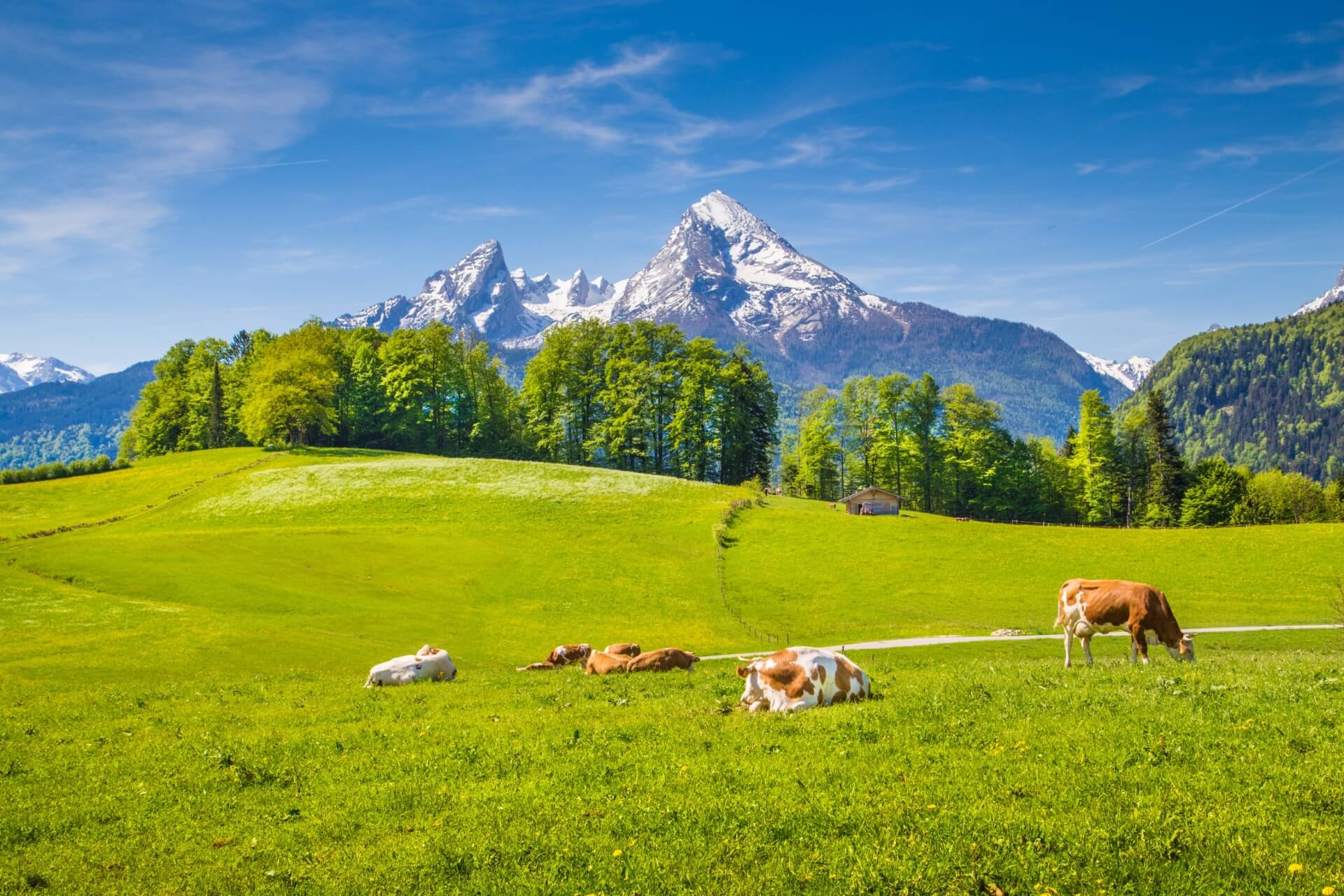
The picturesque area, protected by law, has all types of Alpine landscapes: meadows, rocks, glaciers (the northernmost in the Alps), and mountain lakes. One of them (Blaueis), hidden among the mountains at an altitude of 1600, is Germany’s coldest point with record low temperatures. The area received national park status in 1910. There is no agricultural activity, and resorts do not operate here. You can climb the mountains and wander through the valley only on foot.
Two mountain peaks rise above the park: Watzmann (the third highest mountain in Germany) and Hochkalter. During a trip to the park, you can take a boat ride on the mountain lake, climb the mountains to one of the shelters, and enjoy the surrounding beauty, for example, from the Malerwinkel observation deck. One of the easy routes starts at the Schönau pier and leads to the Grünsteinhütte and Archenkanzel shelters.
For those who do not like hiking, a lift to Jenner Mountain is equipped near this pier (outside the park). A popular place in the park is the beautiful Königssee Lake. Its winding, elongated shape resembles a fjord, surrounded by mountains on all sides. You cannot walk around the lake along the shore. It is suggested to see the cleanest lake during a boat or boat trip. You can get to the park through Berchtesgaden by train or by car from Munich on the A8 highway.
Partnach Gorge
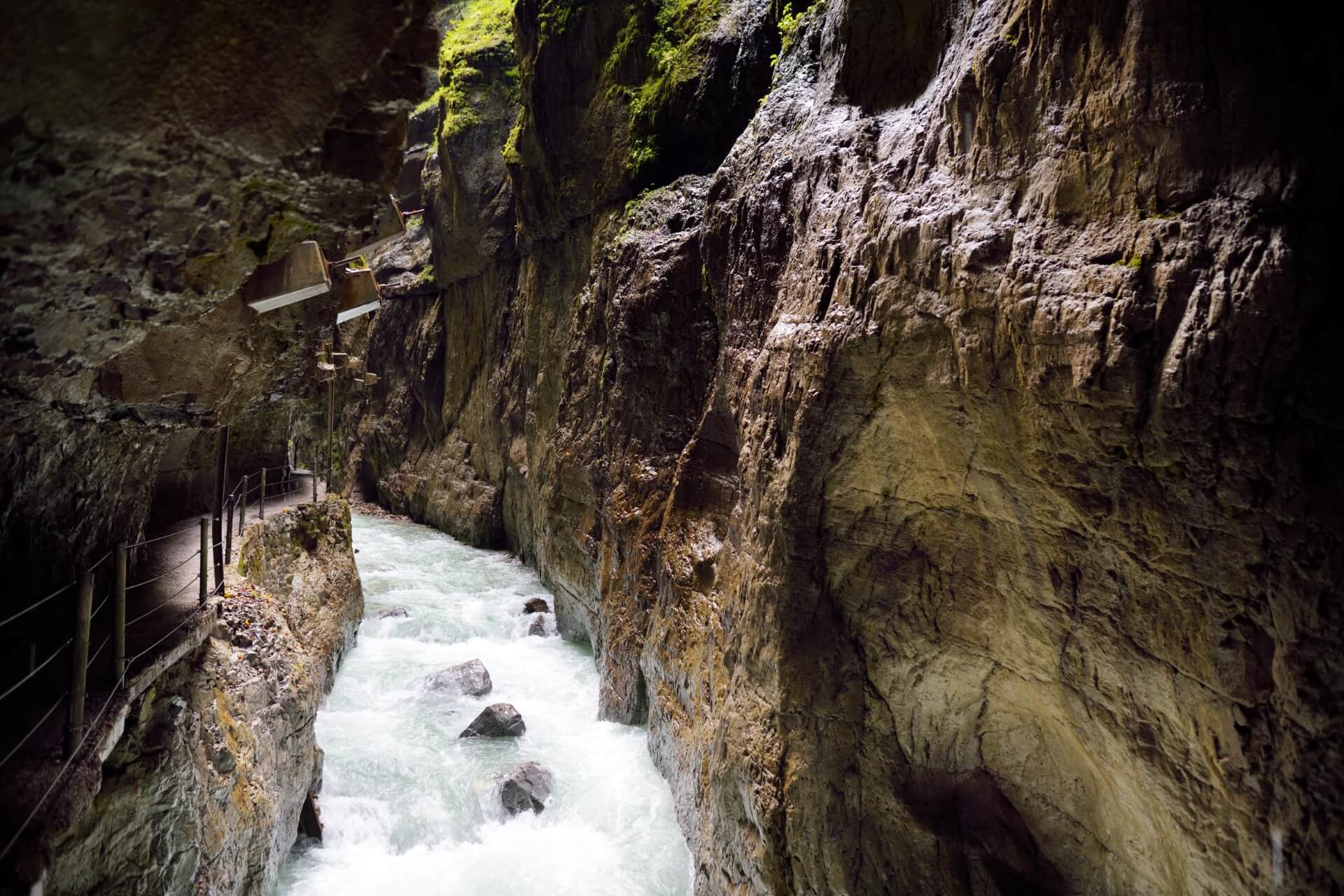
Natural forces of the Alpine transformation era overcame the ancient Triassic ocean and created a crevice at its bottom. Water from the glacier on Zugspitze Mountain (along the Partnach River) formed a narrow canyon (klamm). Its length is 1 km, and the height of the surrounding walls reaches 90 m. In 1912, this place received the status of a natural monument. The gorge is located near Garmisch-Partenkirchen. The first tourists passed through prepared safe paths in 1912.
Several bridges were built above the gorge, offering picturesque natural surroundings. In spring, these are sparkling silver waterfalls, in summer, calm flow and bright flowers on the canyon slopes, in autumn, fiery colors of bright leaves, and in winter, fantastic snow figures from frozen water. Ice formations resemble cave stalactites and stalagmites. You can visit the gorge by coming from Munich to Garmisch-Partenkirchen. Then walk about 40 minutes and admire the extraordinary nature. The entrance to the gorge is paid: adults have to pay 4 €.
Neuschwanstein Castle
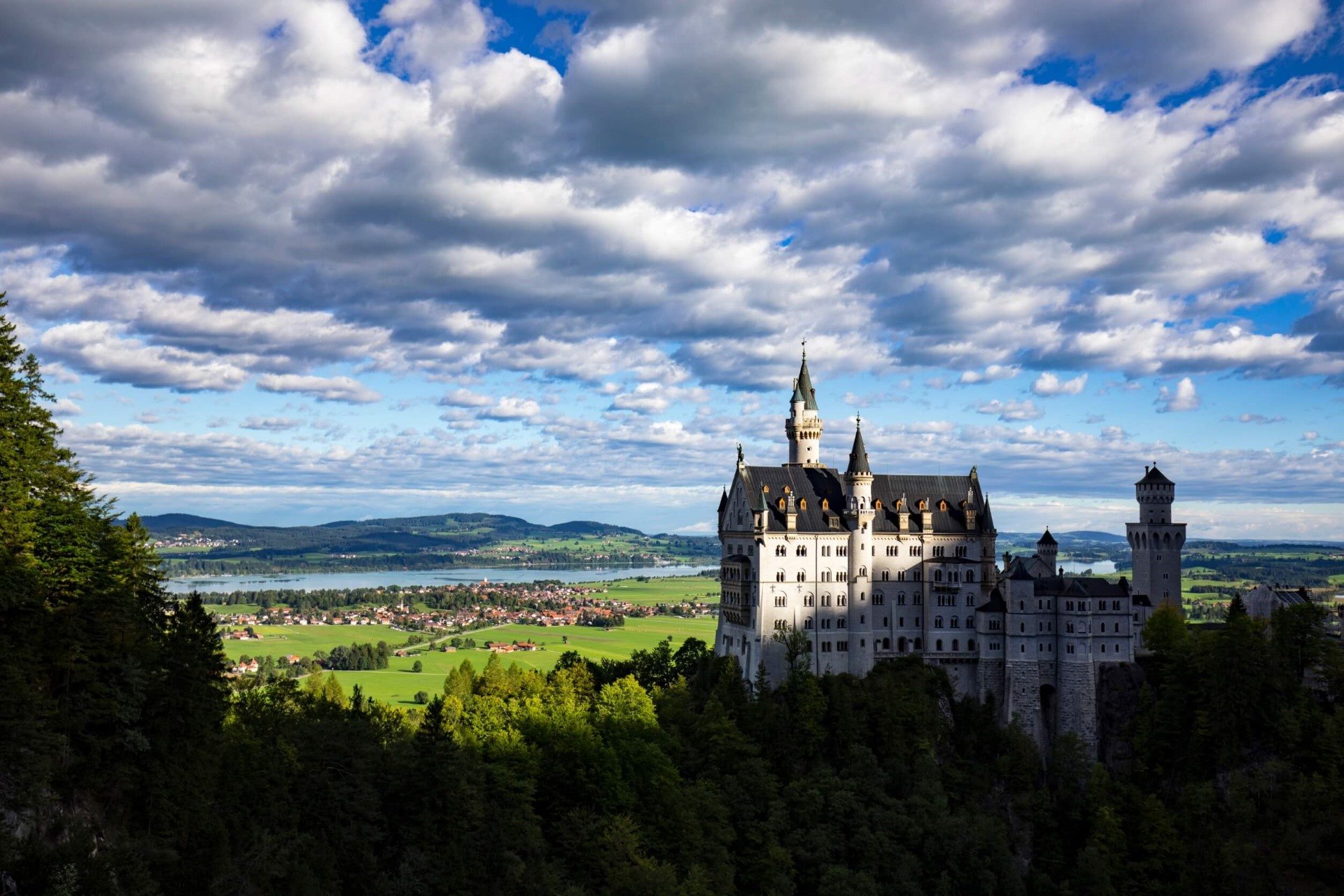
The immortal heritage of Germany was created by the romantic fantasies of the eccentric King Ludwig II. His ideas, inspired by a love of fairy tales, seemed crazy, but three castles born of them became unique attractions of the country. The majestic Neuschwanstein (New Swan Stone or Cliff) was inspired by a character (Swan Knight) from the works of the king’s favorite composer Richard Wagner. Construction took 17 years (starting on September 5, 1869).
It seems that only a wizard could build a fairy-tale structure on the rocks next to the clouds. The castle seems to watch the mountain peaks of the Alps and opens a stunning view of the Alpsee mountain lake and surroundings. Today the castle houses a museum. You can walk through the Throne Hall. It is unfinished. According to the king’s plan, the throne was to be made of gold and ivory. Only 14 rooms were fully completed during the king’s lifetime (out of a total of 360, with many decorations and swan figures).
During the castle tour, you can see the Grotto, artificially created in the form of a stalactite cave. Visit the Singers’ Hall, conceived as the central hall. Music concerts are held there today. The hall’s walls are adorned with murals depicting scenes from legends about the Holy Grail. Admire the king’s bedroom, decorated in neo-Gothic style and adorned with unique wood carvings. Hear numerous legends. For example, that the castle’s walls held the disappeared gold of the Reichsbank. You can get to the fairy-tale Neuschwanstein from Munich (130 km) with a transfer in Buchloe. Arriving in Füssen, you can easily take a bus to the castle.
Linderhof Palace
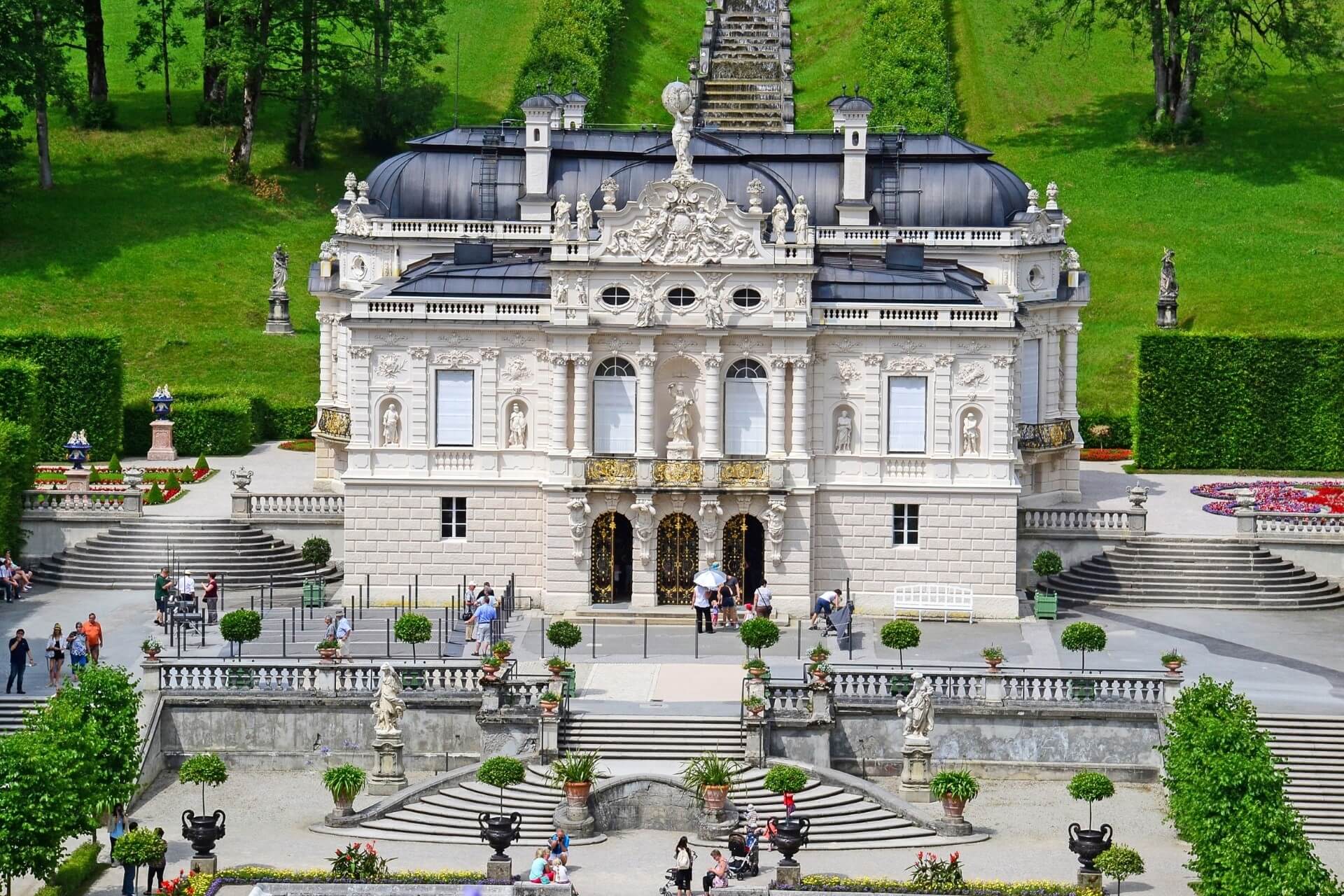
The rich imagination of the king was expressed in the construction of three amazing castles. The smallest of them was fully built during the reign of Ludwig II. The king chose his father’s (Maximilian II) hunting lodge in the Ammergebirge reserve as the place for the residence. A luxurious baroque palace and a beautiful park were created on the analogy of the Versailles Palace. Imitating the idol Sun King (Louis XIV), an architectural masterpiece was built, playing the role of a temple to the sun.
Numerous peacock figures (symbols of the temple) adorn it. They can be seen in the halls and among the alleys of the amazing park. Ten halls are open for tourists to visit. Among them are the gold-glittering halls, Dining, Mirror, Reception, and others. They are connected by pink, blue, yellow, and lilac cabinets. All rooms are adorned with gold, rare tapestries, mirrors, and porcelain items. The Venus Grotto is very interesting.
In the artificial cave with a waterfall and lake, musical holidays were held. Singers floated on a shell boat, and the original lighting became a prototype of modern light music. The park, with the palace in its center, was created by famous gardeners and is among the country’s landmarks. You can see Linderhof during excursions or independently. To do this, you need to come to Oberammergau (by train or car) and take a special bus to the palace.
Hohenschwangau Castle
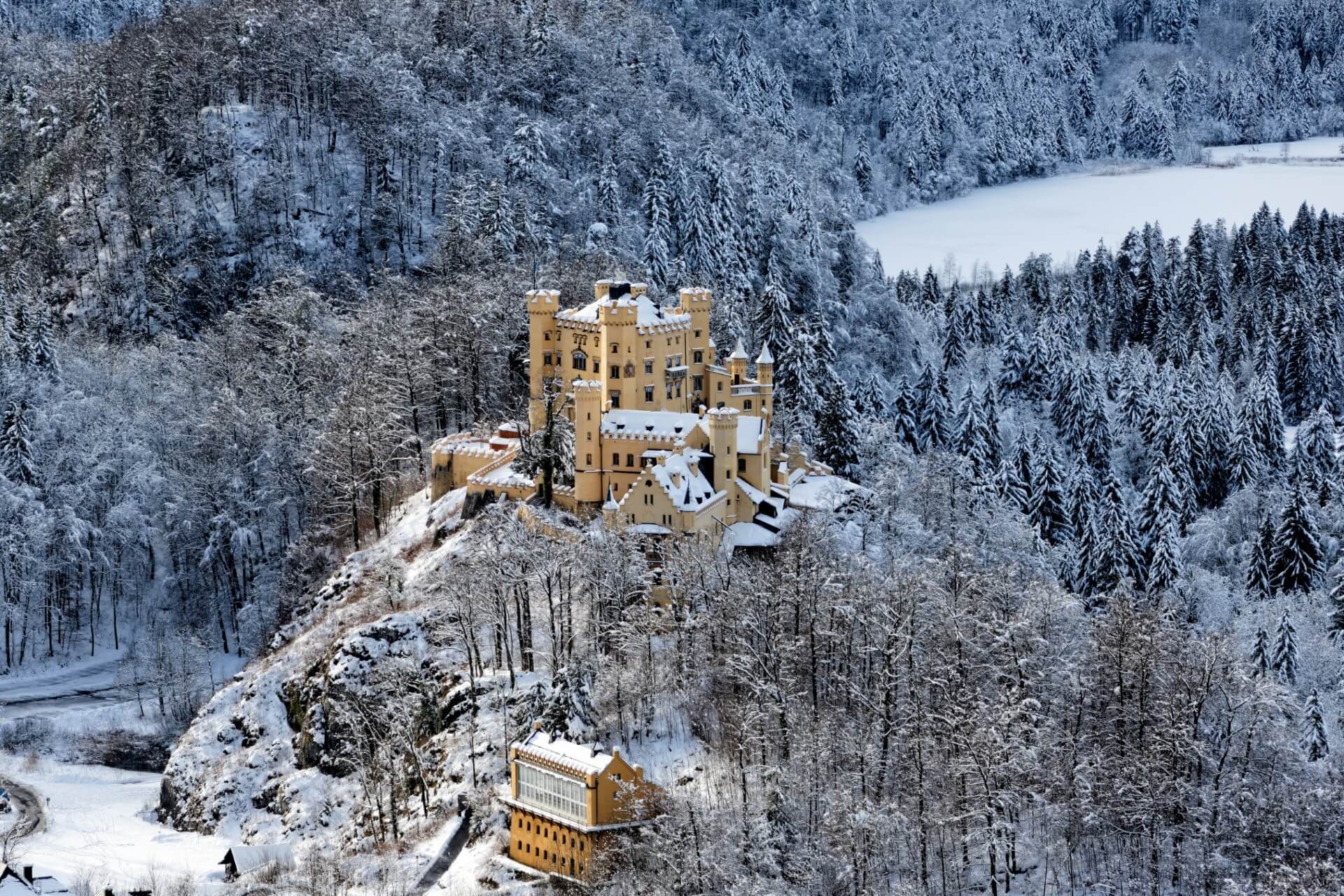
In Füssen’s surroundings is the swan castle of the Wittelsbachs. This dynasty included Maximilian II (father of Ludwig II). The king’s residence, ruling the country for 20 years, was built on the ruins of the Schwanstein fortress, belonging to the knights of Schwangau. The castle’s walls still retain the knightly spirit, captured in the luxurious interior.
Against the backdrop of the beautiful nature of the Bavarian Alps, among the calm waves of the Schwansee and Alpsee mountain lakes, decorated in Biedermeier style (with numerous turrets, bas-reliefs, elements reminiscent of the Grimm brothers’ fairy tales), it resembles a beautiful swan surrounded by beautiful surroundings. Otherwise called “High Swan Region” (Hohenschwangau). The unparalleled beauty can be seen in the Halls of Heroes, the Swan Knight, Queen Mary’s living room, and the king’s chambers. The castle passed to Ludwig II, where he spent his youth.
The Bavarian king didn’t love this place much and started building Neuschwanstein Castle. Now the ancient architectural structure belongs to the Royal House. The descendants of the ancient Wittelsbach dynasty live in it. The castle has the status of a museum. You can get here from the central railway station of Munich by train to Füssen. Then take a bus to the village of Hohenschwangau.
Schleissheim Palace
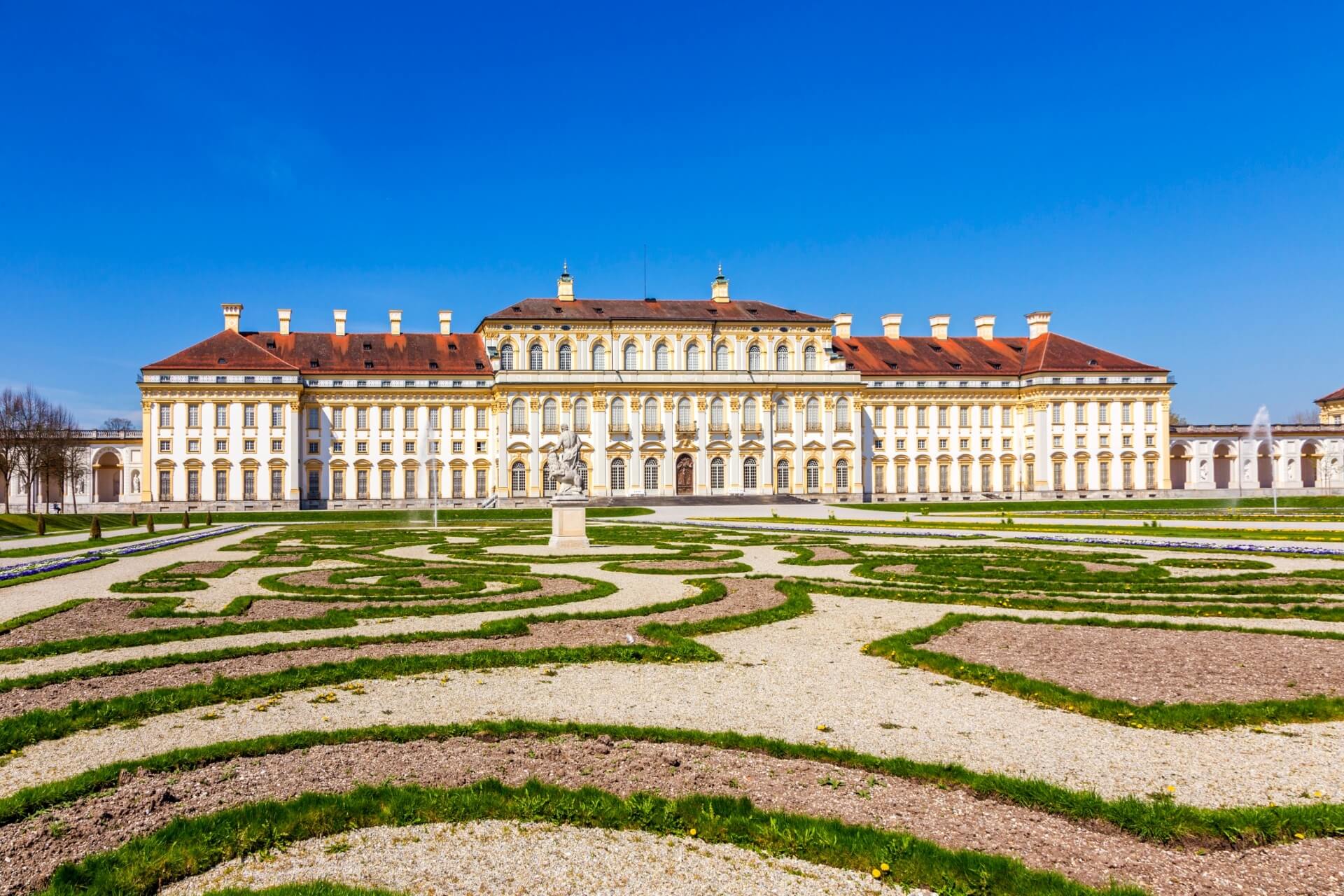
The pride of Bavaria – Schleissheim Palace is located 15 km from Munich. The landmark includes three palaces and a park area:
- Old Palace (Altes Schloss): The first structure appeared around 1598. The current appearance of the palace was acquired in 1617. After the 1970 restoration, a branch of the National Museum was placed in the building. You can see an interesting collection of items used in religious holidays.
- Lustheim: Located on the edge of the park, constructed in 1894 for the wedding of Elector Emanuel. In modern times, it houses a vast collection of Meissen porcelain from the Bavarian National Museum.
- New Palace (Neues Schloss): The palace was built in 1700. It opened to the public at the beginning of the 19th century as a Gallery Palace. Full restoration was carried out in 1970. It houses a painting collection.
- Park area: The garden was created in the baroque architectural style. Now it is the only garden in Germany preserved in its original form (although not all elements can be seen today).
You can get to the palace by high-speed train (direction Freising-Airport) to Oberschleissheim. Then take a bus to the Schloss stop or walk about 15 minutes.
Garmisch-Partenkirchen
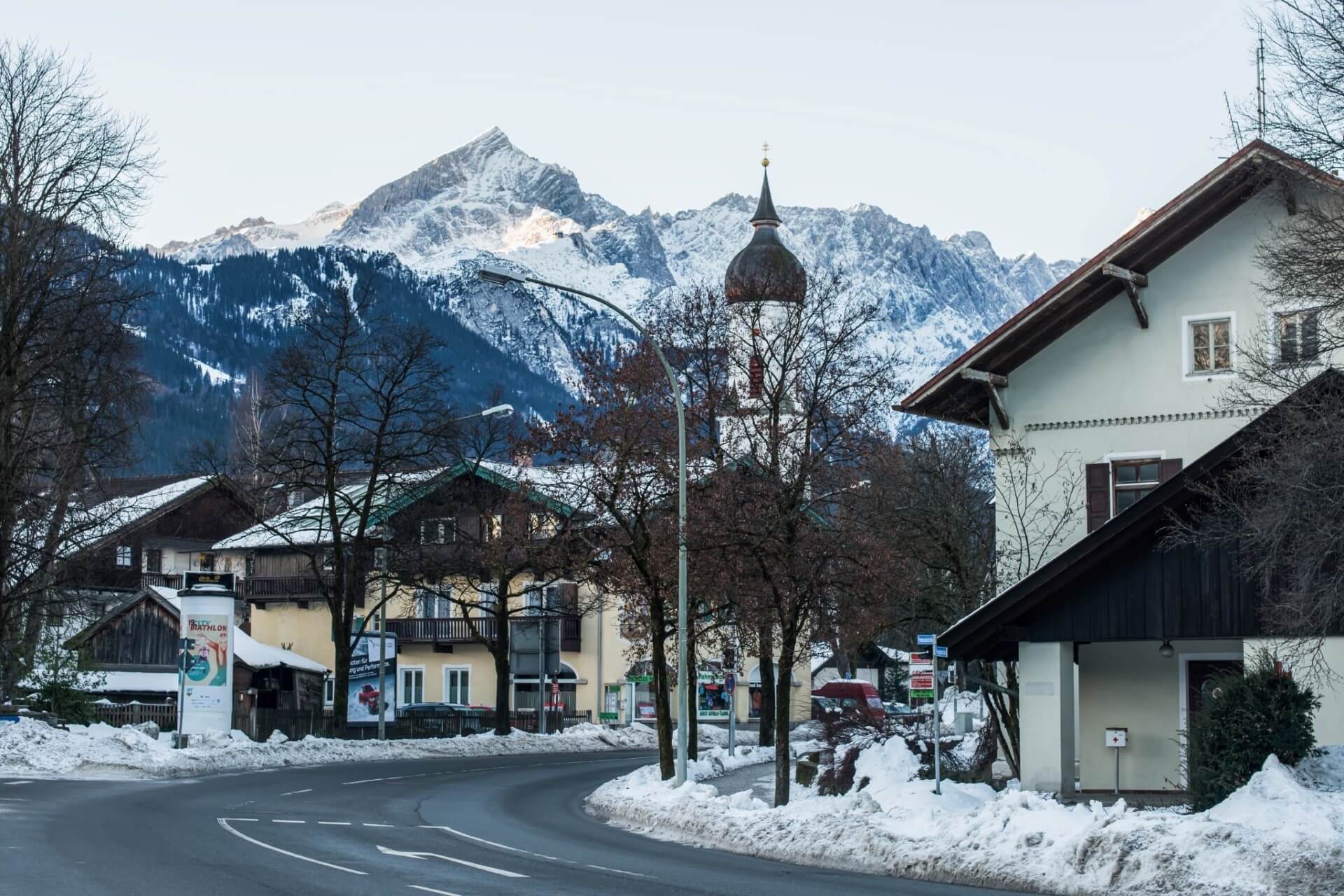
A small town is known as Germany’s popular ski resort. It is located near the border with the Tyrol region, surrounded by the picturesque Bavarian Alps. Neat, painted houses, cozy restaurants, shopping centers, souvenir shops, and modern hotels stretch at the foot of the highest mountain Zugspitze. The first Winter Olympic Games in 1936 for skiing took place on the slopes of this mountain. Historically, the city was formed by merging two ancient settlements: Garmisch and Partenkirchen. The city is divided by a railway line.
Connecting tunnels for transport and people pass under it. To immerse yourself in the city’s atmosphere, you need to walk along the central Ludwigstrasse and look at the ancient buildings of different times and styles. These include the Chapel of St. Sebastian, the luxurious parish church in neo-Gothic style. In the town’s surroundings, there are interesting castles (e.g., Elmau) and the famous Partnach Gorge. You can get from Munich by train or car. Trains and buses depart every two hours. Travel time is 1 hour 30 minutes.
Ingolstadt

An ancient settlement in Upper Bavaria received city status in 1457 (the first mention dates back to 806). A beautiful, green city is known worldwide as a center of automobile manufacturing. The “Audi” company is located here. You can learn about the history of the company and see numerous product samples in its museum. The city tour starts in the historical center, which has long been a pedestrian zone.
In half-timbered houses, there are large and small shopping centers and stores. Shopping enthusiasts can visit the outlet village with boutiques of world-famous brands. In the historical center, there is a church-museum. It houses the world’s largest flat fresco. The German Museum of the History of Medicine, the Triva Tower, the Old and New Town Halls. The entrance to the old part of the city is organized through the medieval Kreuztor gate. It is built in the Gothic architectural style of the country’s romantic era. The Ingolstadt Cathedral is visible from any point in the city due to its size.
The Church of Maria Victoria, the Franciscan Basilica, the Church of St. Maurice (the oldest church building in the city). The Old and New Castles house an interesting Museum of the Bavarian Army. You can visit the city zoo Kleinzoo Wasserstern e.V. with children. From Munich, the city is accessible by the A 9 highway and railway. The distance is 80 km, which can be covered by high-speed train in 40 minutes and by car or bus in 1 hour.
Passau
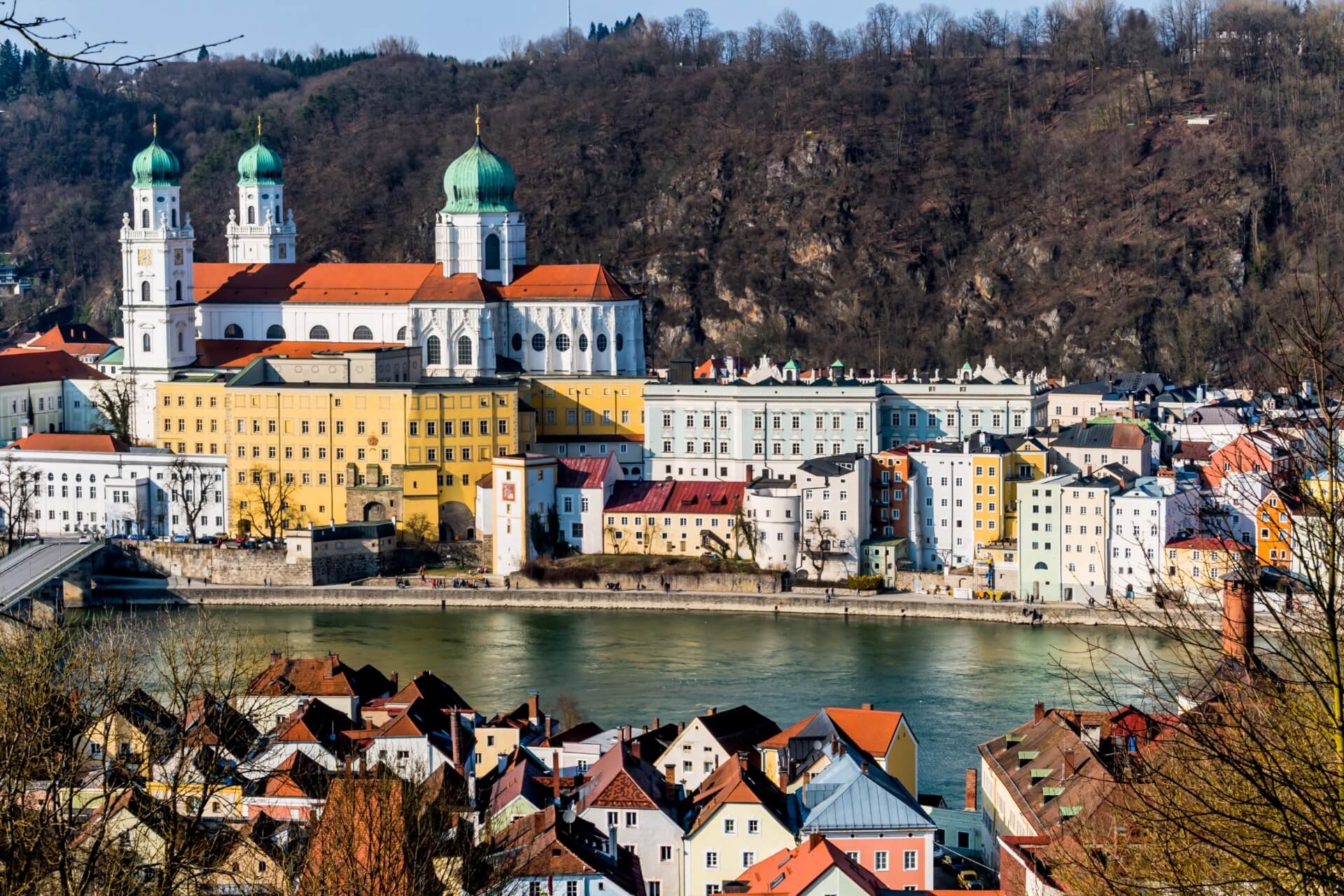
At the confluence of three rivers (Ilz, Inn, and Danube), an ancient Celtic settlement emerged. Convenient for a trading and transport center, it quickly became a beautiful, green city adorned with majestic churches. The interior of the huge temples and small, cozy churches impresses with baroque elements. During the walk, you can listen to the world’s largest organ at St. Stephen’s Cathedral.
In the old Town Hall, you can see an exhibition of elements dedicated to the city’s history. See the beautiful pink St. Paul’s Cathedral (with 12 black altars decorated with gold). You can imagine yourself as a medieval traveler while climbing 321 steps of the “Heaven’s Path” to the church and the Mariä Hilf Monastery. St. Michael’s Church rises in the town’s center. Inside is a very beautiful dome and a mysterious figure of the fallen angel.
An obligatory place for a short walk around the town is its bridges. “German Venice” is adorned with several bridges built over different rivers. Among them is the famous Maria Bridge over the Inn River. It was built in the 12th century for kings to travel from Frankfurt to Budapest. You can get to the town from Munich by car or by train.
Eckbauer Mountain
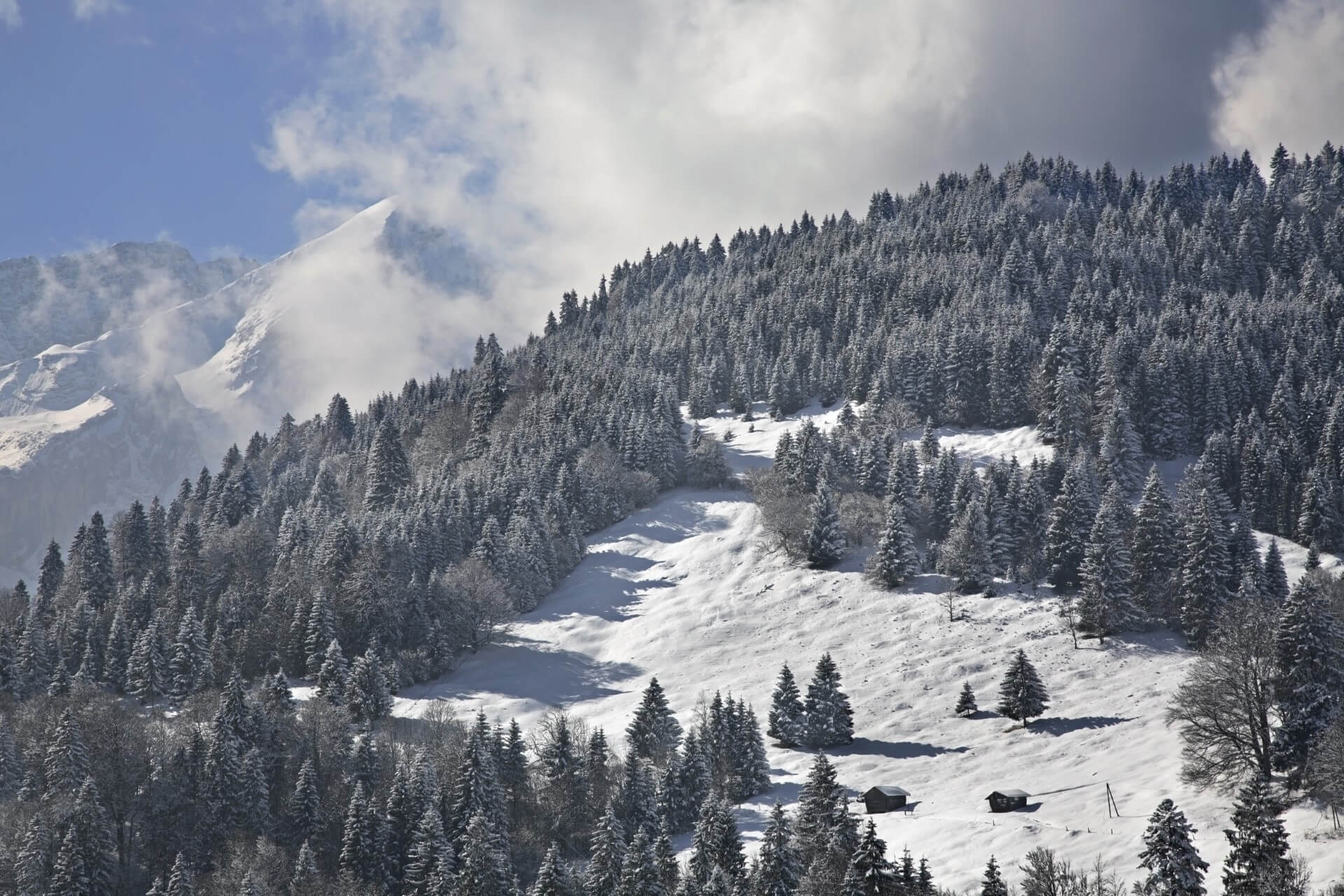
Skiing enthusiasts have long known the slopes of Eckbauer Mountain. Wide mountain trails run through a picturesque forest, passing in the shade of trees. They are equipped with Olympic ski jumps and trails 120 km long for beginners and experienced athletes at an altitude of 1238 m. There is always an opportunity to choose an extreme or easy descent route (blue, red, black trails). The mountain is located near the town of Garmisch-Partenkirchen.
Its development history is linked to the organization of the 1936 Winter Olympics. You can reach the mountain peak by a special two-seater chair lift. You can ski on natural glaciers from November to May. Modern hotels, cafes, and restaurants are located at the mountain’s foot. To get to Eckbauer Mountain (ski resort) from Munich, you can use a railway or highway. Travel time is one and a half hours.
Regensburg
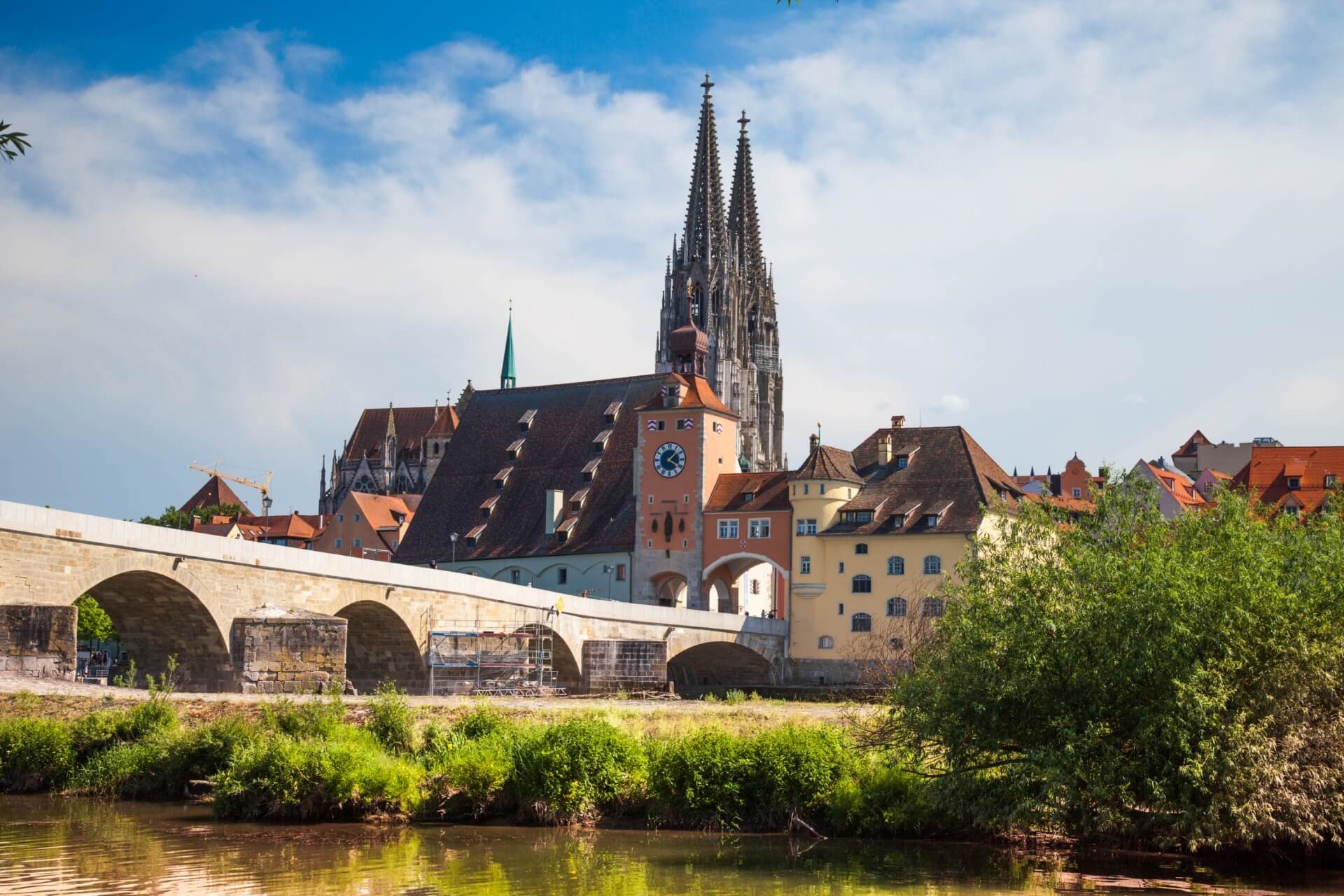
Learning about Bavaria’s history is interesting from its first capital, Regensburg. Imperial city territory saw luxurious residences built by kings, bishops, and Bavarian dukes. Many medieval buildings created at the confluence of the Danube and Regen rivers can still be seen today. The main attraction of Regensburg is considered St. Peter’s Cathedral. The Gothic structure rises on Cathedral Square in the Old Town’s center. A descendant of the billionaire Albert von Thurn und Taxis lives in the old castle Thurn und Taxis (the former residence of the ancient family).
Near the legendary Stone Bridge is the restored building of Germany’s oldest sausage kitchen Wurstküche (the country’s first fast food). The Church of the Holy Trinity, the house of traveling artists (Goliarden) with a depiction of the classic battle between David and Goliath, and many other attractions. It is more convenient to learn all the information about them with a tour. Independently, you can come to the city from Munich (124 km) by car, bus, or regional train.
Kelheim
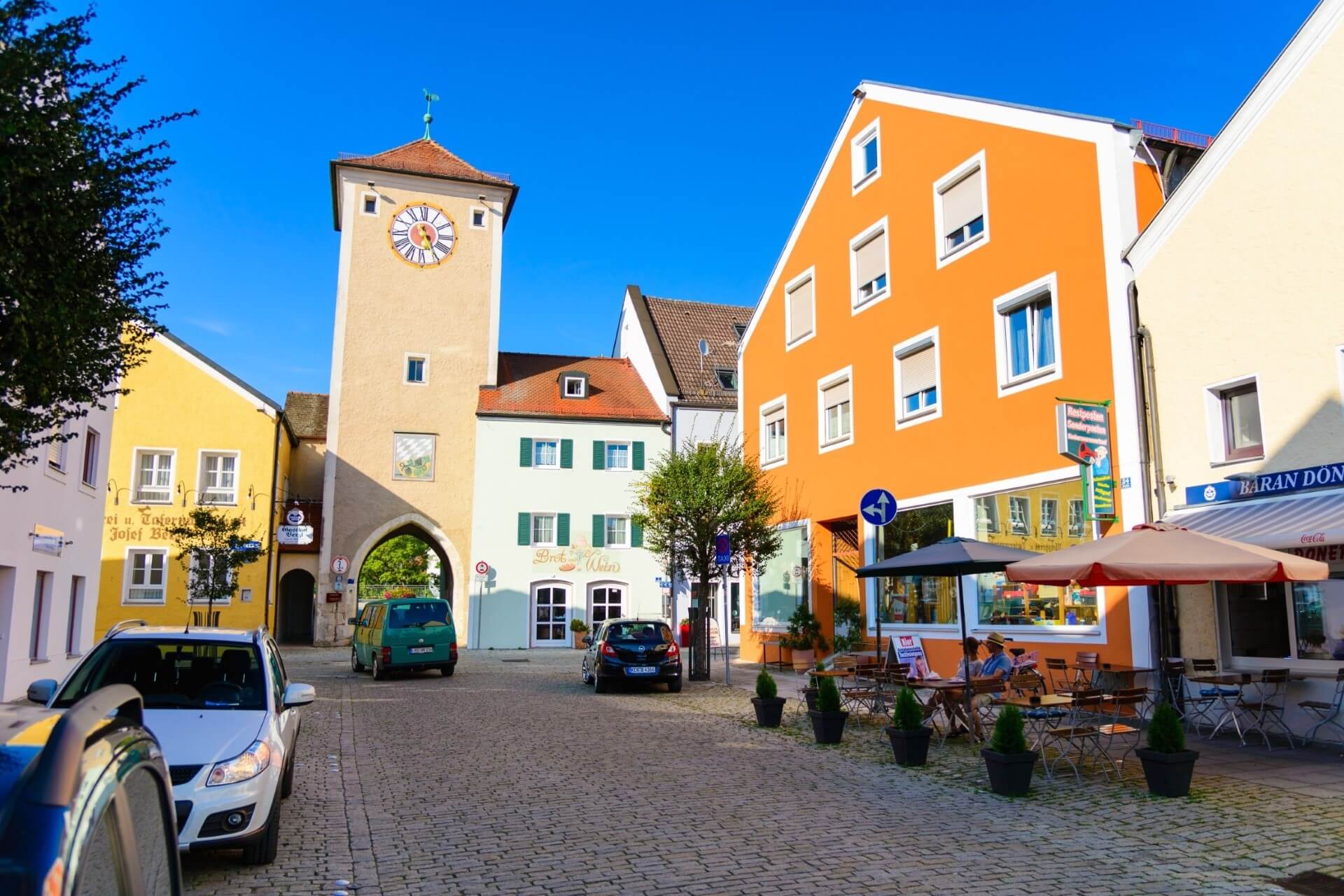
A small town is located between Regensburg and Ingolstadt and is not part of the main tourist routes. It is one of Bavaria’s beautiful, cozy towns. Its distinction is the presence of a natural landmark of Germany listed by UNESCO – the Danube Gorge. The fast Danube surprisingly carved a mountain plateau Schwäbische Alb and formed an intercontinental fjord.
From April to the end of October, you can take an exciting trip by boat along the whimsical cliffs with names like “Kissing Couple,” “Bavarian Lion,” “Napoleon’s Suitcase,” “Three Quarreling Brothers,” “Pie,” “Beehive,” etc. The trip route leads to the Weltenburg Monastery. The ancient building was founded in 617. Its medieval appearance has been preserved to this day. Here also operates Germany’s oldest brewery, producing 10 types of beverages. On a high steep cliff is another interesting town attraction: the “Hall of Liberation.”
The dome-shaped structure (with typical Roman elements in the form of columns, arched galleries, statues) was built by order of King Ludwig I in honor of the victory over Napoleon’s troops. The structure is located at the top of Mount Michelsberg and is visible from any town point. Near the town is the village Essing with the longest pedestrian bridge in Europe over the Main-Danube canal. You can get here from Munich (110 km) by train to Saal an der Donau, then by bus. However, a transfer in Ingolstadt or Regensburg is unavoidable.
Stuttgart
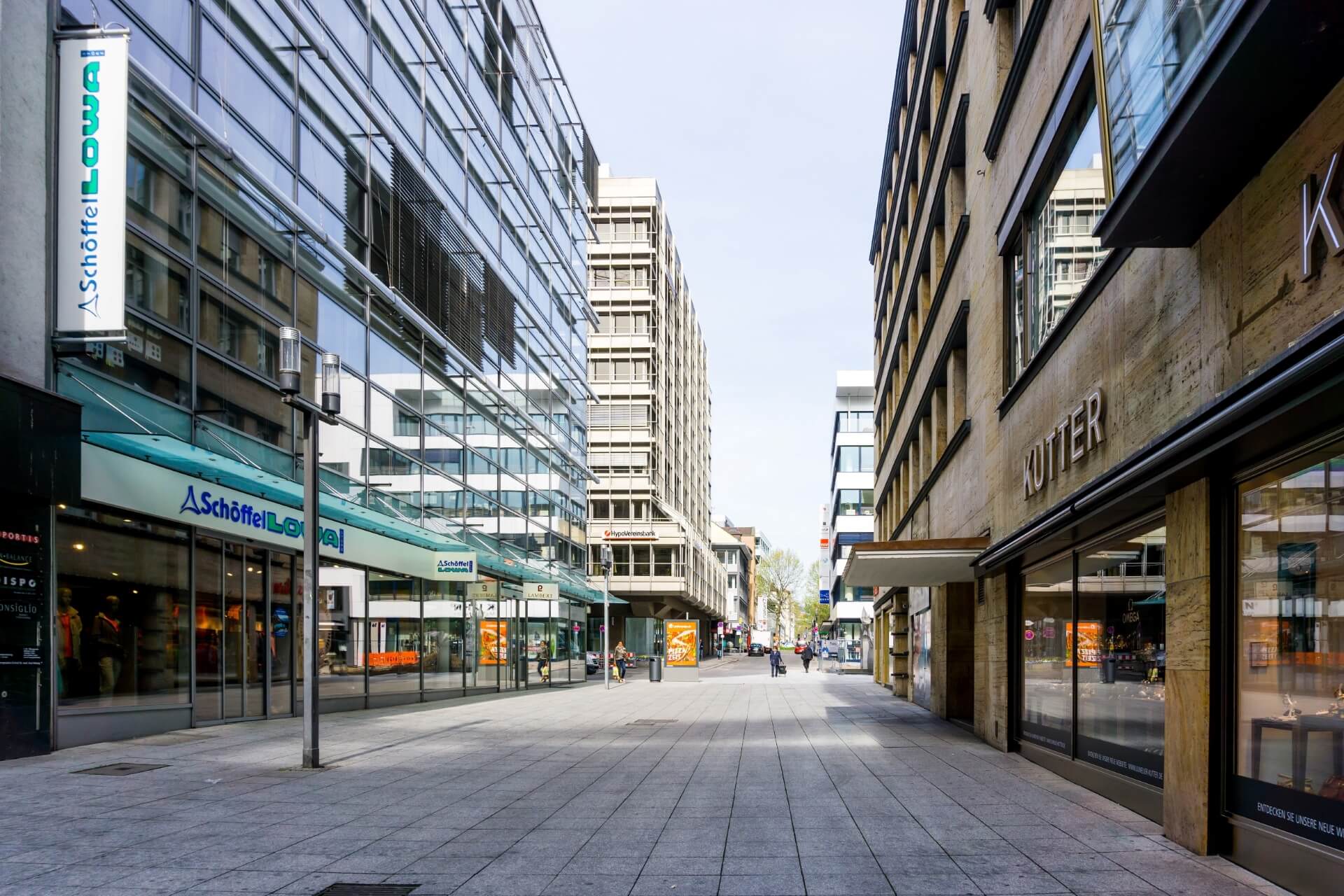
One of the main industrial and cultural centers of the country is located on the Neckar River. This ancient fertile valley has long been an important agricultural area, allowing the creation of a wealthy city back in the Roman Empire. Now it is one of Europe’s largest innovation centers. The city with enterprises possessing high technologies in various industries. Major engineering corporations and industrial giants are located in Stuttgart.
It leads in terms of wealth. Several universities, higher schools, and institutes are located in the city’s surroundings. Popular attractions include the Monastery Church building (symbol of old Stuttgart), the Mercedes-Benz Museum, the Old Castle, the Wilhelma Botanical Garden, the residential complex “White Courts” (Weissenhof), and others. You can get to the city from Munich by train (travel time 2 hours 20 minutes), by bus or rented car in the same time, or by plane.
What to See in Frankfurt: A Comprehensive Sightseeing Tour Guide

